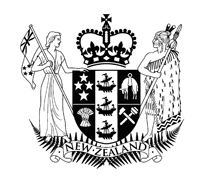Hon Amy AdamsMinister for Communications and Information Technology |
 |
| 2 August, 2012 |
Media statement |
UFB exceeds year one target
The year one target for the Government’s Ultra-Fast Broadband (UFB) initiative has been exceeded by more than 6000 premises, with the fibre network now reaching more than 76,000 schools, businesses, hospitals and households.
Results released today by Communications and Information Technology Minister Amy Adams also show that under the first year of the Rural Broadband Initiative (RBI), more than 69,000 rural homes and businesses now have access to improved broadband.
More than 660 schools are covered by the initiatives, providing a wider range of learning opportunities for both students and their teachers, and bringing education into the 21st century. By the end of June 2013, 1500 schools are expected to have received fibre.
Other year one highlights include:
- UFB deployment has started in 24 towns and cities, and the first UFB connections are available in 17 of these regions.
- Ten out of 57 remote rural schools have been connected to faster broadband.
- All year 1 RBI hospital connections have been completed at Murchison Community Hospital, Dunstan Hospital, Waikari Hospital, and Tautapere Maternity Hospital. An additional 43 hospitals already had a fibre connection prior to the establishment of the UFB and RBI.
- Approximately 1700 kilometres of fibre has been laid throughout New Zealand.
Ms Adams says that by July next year about 235,000 premises are to be covered by the UFB network, and more than 100,000 rural homes and businesses will have access to faster broadband.
More than 1200 customers have already made the decision to subscribe to a fibre-based service under the UFB programme, which is in-line with government expectations.
“It has always been our belief, based on overseas experience, that uptake will build gradually over the period of the network build.
“We are starting to see some exciting product offerings from retail service providers, but it takes time for products to be developed for the market and for people to recognise the value of UFB.
“Despite recent comments from some quarters, New Zealand has sufficient transit capacity to handle increased network demand from UFB.”
Ms Adams says faster broadband is a key part of the government’s economic growth agenda.
UFB will see New Zealand leapfrog a wide range of international competitors, improve our connectivity and drive economic growth.
“Fast broadband enables businesses to connect easily to the world. Our investment in broadband will support innovation, high-tech jobs, and grow productivity.”
Media contact: Nathan Beaumont 021 243 8412
Note to journalists: Attached is a document that outlines the progress of the Government’s UFB and RBI programmes in year one (1 July, 2011 – 30 June, 2012)
UFB background:The Ultra-Fast Broadband Initiative is a government programme to expand and develop New Zealand’s broadband services.
Ultra-fast broadband will bring fibre optic technology to homes, schools, hospitals, marae and businesses.
By the end of 2019, 75 per cent of New Zealanders will be connected to ultra-fast broadband. Schools, hospitals and 90 per cent of businesses in the coverage area will be connected by 2016. Homes and the remaining 10 per cent of businesses will be connected by 2019.
Fibre will be capable of peak speeds of 100 Mbps.
The government is contributing $1.35 billion to the initiative with further investment by the Government’s Ultra-Fast Broadband partners.
RBI background:The Rural Broadband Initiative has been implemented by the Government to address the specific broadband infrastructure needs of rural New Zealand.
It will bring faster broadband to 86 per cent of rural homes and businesses, with peak speeds of at least 5Mbps. Before the RBI was launched, about 20 per cent of rural homes and businesses had access to 5Mbps, and about half of the rural community used dial-up.